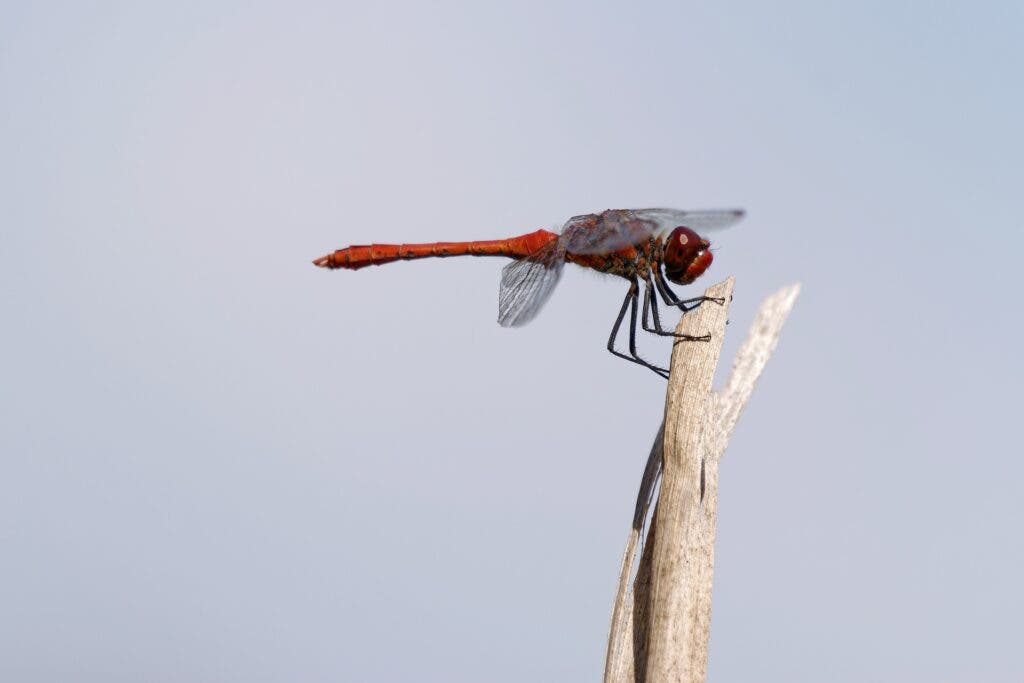If you are on the 50th floor of a skyscraper and open the window, it won’t take long before an insect buzzes in. Even spiders may jump in, dispersed by the wind. But like all things, there’s a ceiling to how high insects can fly — even in the sky.

It’s challenging to pin an actual figure on how high insects can fly. “We can pick up insects at 5,000 or 6,000 feet,” says Phil Pellitteri of the University of Wisconsin-Madison insect diagnostic lab. “But wind is a big factor in insect movement, and it’s hard to know whether they are flying or drifting.”
All living flying creatures, be they birds, insects, or bats, are constrained in how high they can climb up in the air by three main factors: air density, temperature, and oxygen levels. The higher up you go in altitude, the thinner the air. And since fewer and fewer air molecules can push against a bird’s or insect’s wings, flying becomes more challenging. The same goes for oxygen, which insects also need to breathe and function, and whose levels are only half those at sea level once you’re at 6,000 meters (20,000 feet) altitude.
At that altitude, the temperature drops to about -20°C. At 10,000 meters (40,000 feet), the air temperature is -50°C. At such temperatures, the tiny muscles of flies or bees don’t work anymore to keep their wings beating.
It’s then no wonder that the highest altitude scientists have ever found insects — some flies and butterflies — is at around 6,000 meters (20,000 feet). This record belongs to a lonely termite, captured in 1961 by insect traps placed on a Super-Constellation airplane. The plane flew over 186,000 km (116,000 miles) close to 20,000 feet altitude and the termite is all that they could find, so it’s safe to say the ceiling for insects is around this altitude. A bit lower, at around 5,000 meters (16,400 feet), weather balloons have collected stoneflies, mayflies, and locusts.
In 2014, scientists led by Michael Dillon, a researcher with the Department of Zoology and Physiology at the University of Wyoming, performed an unusual lab experiment in which alpine bumble bees were placed in a chamber that mimicked the low air pressure of high altitudes. Under simulated conditions, the researchers found that some bumble bees could — in theory at least — fly at altitudes of about 9,000 meters (29,500 feet), which is higher than Mt. Everest.

The reduced air density forced the bumblebees to adapt by changing the motions of their wings, swinging them through a wider arc that compensates for the reduced air drag, the researchers found. However, the authors concede that in the real world bees are very unlikely to fly that high, especially considering the low temperatures that hurt their muscles.
In any event, insects don’t need wings to fly high up into the sky. According to British researcher Jason Chapman, during a windy summer month in the UK 3 billion insects can fly overhead. As you travel down towards the equator, the amount of insect air traffic increases. Most of these insects, including many wingless critters, are dispersed by the wind. They can travel for thousands of kilometers and land in a completely different part of the world. Remarkably, despite the bumpy ride, most insects survive the grueling journey.
Furthermore, some insects seem to have evolved to time when they surf on gusts of wind to match the best season to migrate. Pellitteri explains:
“Some of the southern species, like the little leaf hopper, which infests alfalfa, strawberries and potato, have something that functions like a temperature gauge. If the temperature falls below 60 degrees, they drop down. This makes sense. If the wind is from the south, it’s going to be warmer, and they will get a free ride north. When the wind comes from the north, it’s cooler, and they stay put on the ground.”
It’s hard to pin an exact figure to how high insects can fly, but what’s certain is that billions of bugs are cruising through these airborne highways each day across the world.


